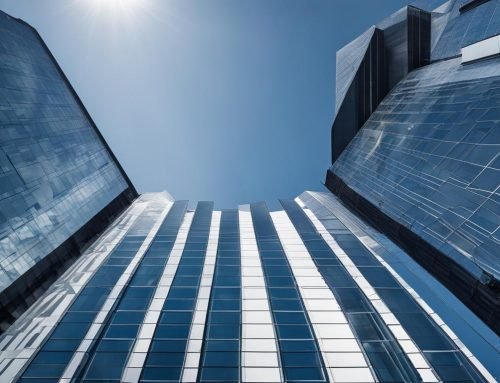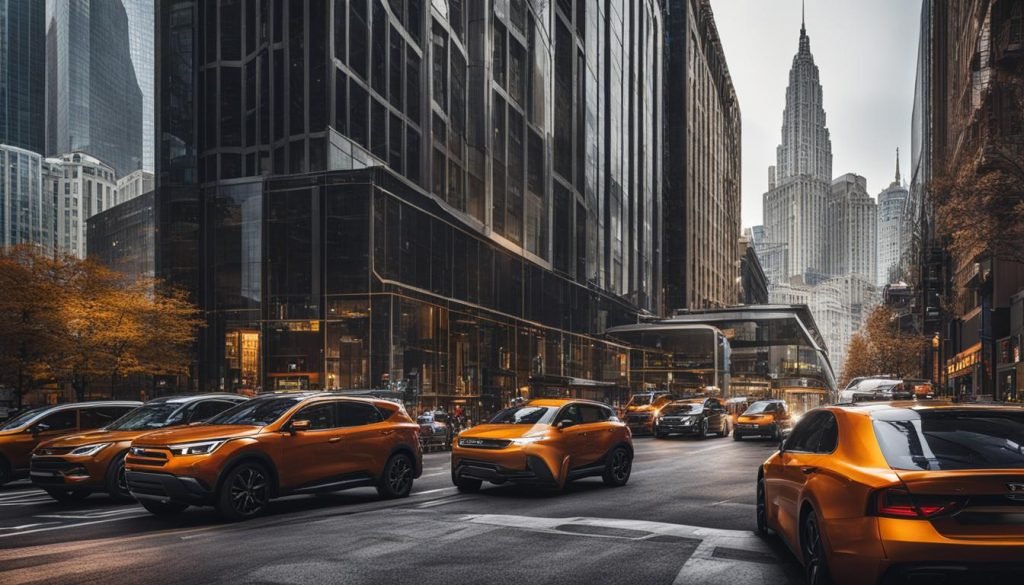
The architectural photography industry is constantly evolving, with new trends and techniques shaping the way photographers capture buildings and structures. In this article, we will delve into the latest trends in architectural photography, providing insights into emerging styles and innovative techniques that photographers can use to elevate their craft. From the use of unique angles and compositions to experimenting with lighting and post-processing, staying updated with the latest trends is essential for photographers looking to captivate audiences and stand out in the competitive field of architectural photography.
Key Takeaways:
- Architectural photography is an ever-evolving industry with new trends and techniques.
- Staying updated with the latest trends is essential for photographers to stand out.
- Unique angles, lighting, and post-processing techniques can elevate architectural photography.
- The human element and sustainable architecture are emerging trends in the field.
- Architectural photography competitions and the integration of new technologies shape the future of the industry.
The Influence of Architecture in Photography
Many architectural photographers have a background in architecture, which greatly influences their approach to photography. Understanding the principles of architectural design and space allows photographers to capture buildings from a unique perspective. The understanding of composition, lines, and structures learned through architectural training translates into visually appealing photographs. Additionally, contemporary architectural photography trends focus on capturing the essence and atmosphere of a space, going beyond traditional documentation and embracing a more artistic and expressive approach.
Architecture is not just a subject for photographers; it is a source of inspiration and a guiding force in their work. By having an architectural background, photographers have an inherent understanding of how buildings are designed and the visual elements that make them visually striking. This knowledge allows them to photograph buildings from angles and perspectives that highlight their unique features. It also enables them to play with composition and balance, creating visually pleasing images that capture the viewer’s attention.
In contemporary architectural photography, there is a shift towards capturing the mood and atmosphere of a space. Photographers aim to convey the emotions and feelings that a building evokes, going beyond mere documentation. This approach requires a deeper understanding of architecture and the ability to connect with the essence of a building. By embracing the influence of architecture, photographers can create images that resonate with viewers on a deeper level and evoke a sense of awe and appreciation for the built environment.
Overall, the influence of architecture in photography is undeniable. The principles and techniques learned through architectural training shape the way photographers approach their craft, allowing them to create visually stunning images that capture the essence and beauty of buildings. By embracing architectural design and incorporating it into their work, photographers can elevate their photography and engage viewers in a more meaningful way.
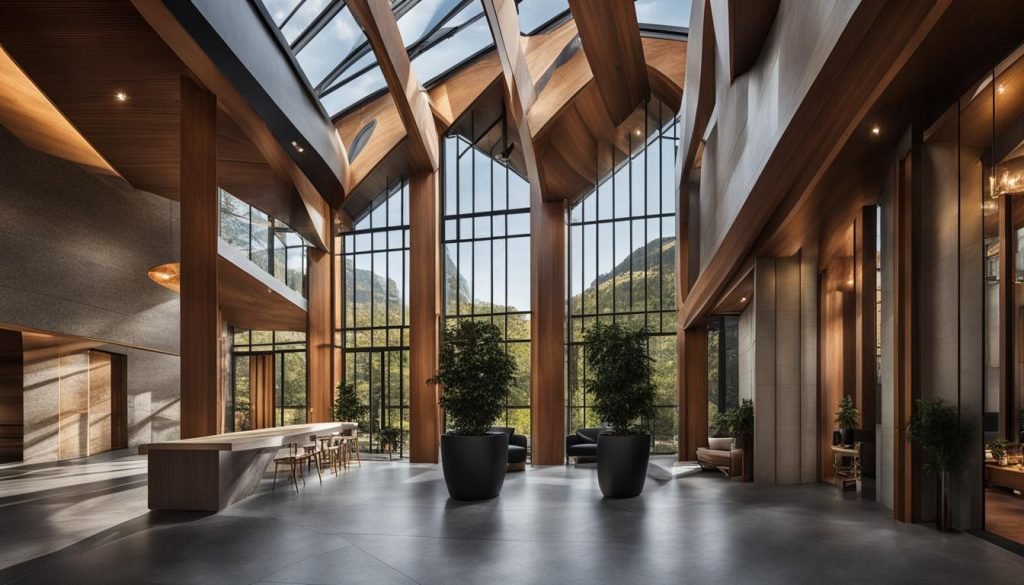
Exploring New Techniques and Perspectives
In recent years, architectural photographers have been pushing the boundaries of their craft, experimenting with innovative techniques to capture striking and dynamic images. These new approaches bring a fresh perspective to architectural photography, allowing photographers to create captivating visuals that stand out in a visually saturated world.
One of the emerging trends in architectural photography is the use of unconventional angles and perspectives. Photographers are exploring aerial photography and low-angle shots to showcase the grandeur and scale of buildings. These unique viewpoints provide a fresh and awe-inspiring look at architectural structures, allowing viewers to appreciate the intricacies of the design.
Another technique that has gained popularity is the incorporation of drones in architectural photography. Drones offer photographers the ability to capture stunning aerial views and unique vantage points that were previously inaccessible. This technology opens up endless possibilities for creative compositions and allows photographers to experiment with different angles and perspectives.
With these innovative techniques, architectural photographers are breaking away from traditional norms and creating visually engaging images that push the boundaries of the field. By embracing new perspectives and experimenting with unconventional techniques, photographers can capture the essence and beauty of architecture in ways that were previously unimaginable.
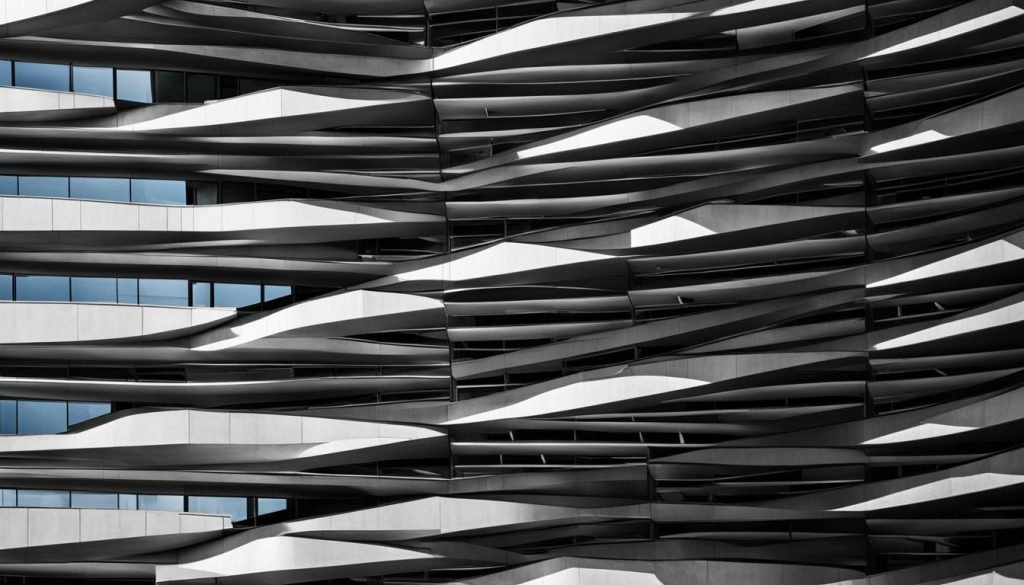
Exploring Different Light Conditions
When it comes to architectural photography, lighting is a crucial element that can greatly impact the overall mood and atmosphere of an image. Photographers are increasingly experimenting with different light conditions to create dramatic effects and enhance architectural details.
- Golden hour: Photographers often take advantage of the soft, warm lighting during the golden hour, which occurs shortly after sunrise or before sunset. This natural light enhances the textures and colors of buildings, creating a captivating visual experience.
- Twilight: The twilight hours, also known as the blue hour, offer photographers the opportunity to capture stunning images with a dramatic and ethereal vibe. The combination of natural and artificial lighting during this time adds a sense of mystery and allure to architectural photographs.
- Artificial lighting: Photographers are also using artificial lighting techniques to highlight specific architectural elements and create a unique ambiance. By strategically placing lights and adjusting their intensity, photographers can create visually stunning images that draw attention to the architectural details.
By experimenting with different lighting conditions, architectural photographers can add depth and visual interest to their images, ultimately creating photographs that evoke emotions and captivate their audience.
Popular Architectural Photography Styles
When it comes to architectural photography, there are several popular styles that photographers often employ to capture the essence and beauty of buildings. These styles not only help showcase the unique design elements of the architecture but also enhance the overall visual appeal of the photographs. Here are some popular architectural photography styles that you can explore and experiment with:
- Minimalistic: The minimalistic style focuses on clean lines, simplicity, and the removal of any unnecessary elements from the frame. By emphasizing the essential features of the architecture, minimalistic photography creates visually appealing images that highlight the elegance and beauty of the design.
- High Contrast: The high contrast style involves capturing architectural structures with a stark contrast between light and dark areas. This technique adds drama and depth to the photographs, creating a captivating visual impact that draws the viewer’s attention to the intricate details of the architecture.
- Abstract: Abstract architectural photography explores the artistic and creative aspects of buildings. This style focuses on capturing unique angles, patterns, and textures that may not be immediately recognizable as architectural elements. By taking a more abstract approach, photographers can create visually striking images that challenge the viewer’s perception of architecture.
- Long Exposure: Long exposure photography involves using a slow shutter speed to capture the movement of light and create a sense of motion within the frame. This technique is particularly effective in architectural photography when there are elements such as flowing water, moving clouds, or bustling city streets that can add dynamism and energy to the composition.
By incorporating these popular architectural photography styles into your work, you can add variety and depth to your portfolio while showcasing the unique beauty of different architectural designs. Experiment with different styles and techniques to find your own creative voice and develop a signature style that sets your work apart.
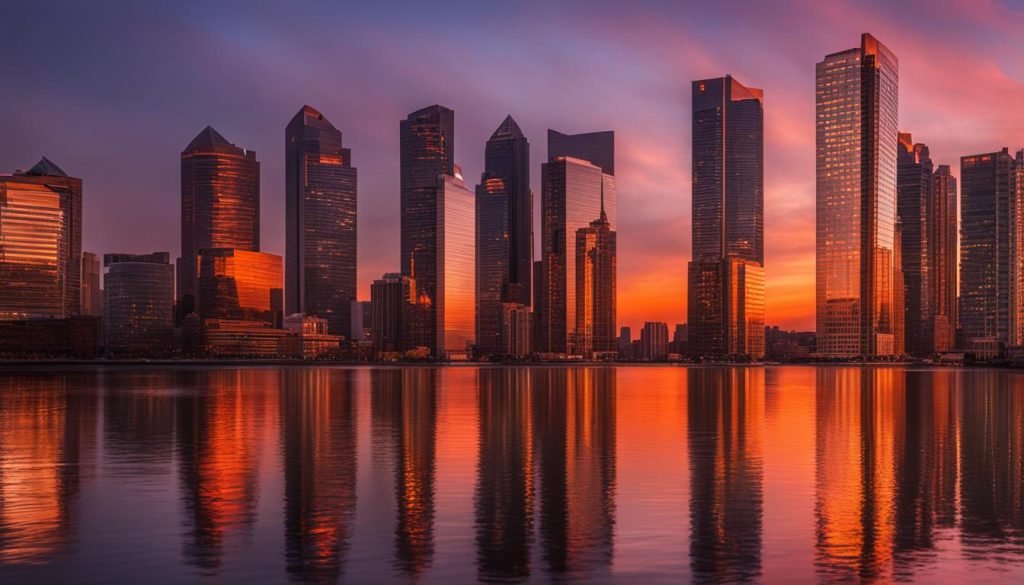
Minimalism and Clean Lines
The trend of minimalism has made its way into architectural photography, with an increasing focus on clean lines, simplicity, and a reduction of visual elements. Photographers are embracing minimalistic compositions, emphasizing the essence of a building and removing distractions from the frame. This trend aligns with the contemporary architectural movement, which often favors sleek and minimalist designs. By capturing the elegance and simplicity of architectural forms, photographers can create images that are visually appealing and aligned with current design trends.
Embracing minimalism in architectural photography allows photographers to convey a sense of tranquility and harmony. By removing unnecessary elements from the frame, the viewer’s attention is drawn to the essential features of the building, such as its form, structure, and materials. This minimalist approach creates a sense of visual balance and allows the architectural design to speak for itself.
Minimalist architectural photography also highlights the relationship between architecture and its surroundings. By simplifying the composition, the photographer can emphasize the interaction between the building and its environment, whether it’s a natural landscape or an urban setting. This creates a powerful visual narrative and enhances the overall impact of the photograph.

Emphasizing simplicity:
- Focus on clean lines and geometric shapes
- Remove unnecessary visual clutter
- Highlight the essential features of the building
Creating visual balance:
- Ensure a harmonious composition
- Pay attention to symmetry and proportion
- Utilize negative space effectively
Highlighting the relationship with the environment:
- Capture the building’s integration with nature or the surrounding urban context
- Showcase how the building interacts with light and shadows
- Illustrate the building’s impact on the surrounding space
“Less is more.” – Ludwig Mies van der Rohe
Capturing Sustainable Architecture
Sustainable architecture is a growing trend in the field of architectural photography, as more and more buildings are designed with a focus on environmental consciousness. As a photographer, capturing the essence of sustainable designs is not only visually engaging but also contributes to raising awareness about the importance of eco-friendly building practices.
One way to showcase sustainable architecture is to highlight the use of energy-efficient features, such as solar panels or passive cooling systems. By emphasizing these elements in your photographs, you can capture the innovative design choices that contribute to a building’s sustainability.
Another approach is to incorporate the surrounding green spaces into your compositions. Showcase how the building interacts with nature, whether it’s through rooftop gardens, vertical gardens, or expansive windows that offer panoramic views of the surrounding landscape. This not only adds visual interest but also conveys the harmonious relationship between architecture and the environment.
When photographing sustainable architecture, it’s important to consider the overall narrative behind the building. What message does it convey? How does it integrate with the surrounding community? By capturing these elements, you can create a compelling visual story that inspires viewers to appreciate and advocate for sustainable architectural practices.

Why it matters:
- Raises awareness about the importance of sustainable architecture
- Highlights innovative design choices that contribute to energy efficiency
- Emphasizes the harmonious relationship between architecture and the environment
- Tells a compelling visual story that inspires viewers to appreciate and advocate for sustainable architectural practices
Key points to remember:
- Highlight the use of energy-efficient features in your photographs
- Incorporate the surrounding green spaces into your compositions
- Consider the overall narrative and message behind the building
Experimenting with Post-Processing
Post-processing has become an integral part of contemporary architectural photography, allowing photographers to enhance their images and bring out the desired aesthetic. It offers a range of creative possibilities, from subtle adjustments to more transformative editing techniques, enabling photographers to add depth, enhance colors, and create unique visual interpretations of architectural spaces.
Pushing the Boundaries
Photographers are pushing the boundaries of traditional post-processing techniques, exploring innovative ways to manipulate and enhance their images. From experimenting with color grading to creating surreal effects, they are using post-processing to add an extra layer of artistic expression to their architectural photographs. These unconventional approaches result in visually engaging and captivating images that stand out in an increasingly saturated visual landscape.
“Post-processing allows me to transform architectural photographs into digital artworks, bringing out the emotions and atmosphere of the spaces. It gives me the creative freedom to push the limits of traditional photography and create something truly unique.” – Renowned architectural photographer
Customized Visual Interpretations
Architectural photographers are using post-processing to create customized visual interpretations of buildings and structures, emphasizing their unique characteristics and capturing the intended mood. Through careful adjustments to brightness, contrast, and saturation, photographers can craft images that convey a specific emotional tone or highlight specific architectural elements. This customization enables photographers to infuse their personal style into their work, creating a distinct visual signature.
- Enhancing architectural details to showcase the craftsmanship and design elements
- Creating a vibrant and immersive atmosphere through color manipulation
- Adding or removing elements to achieve a desired composition
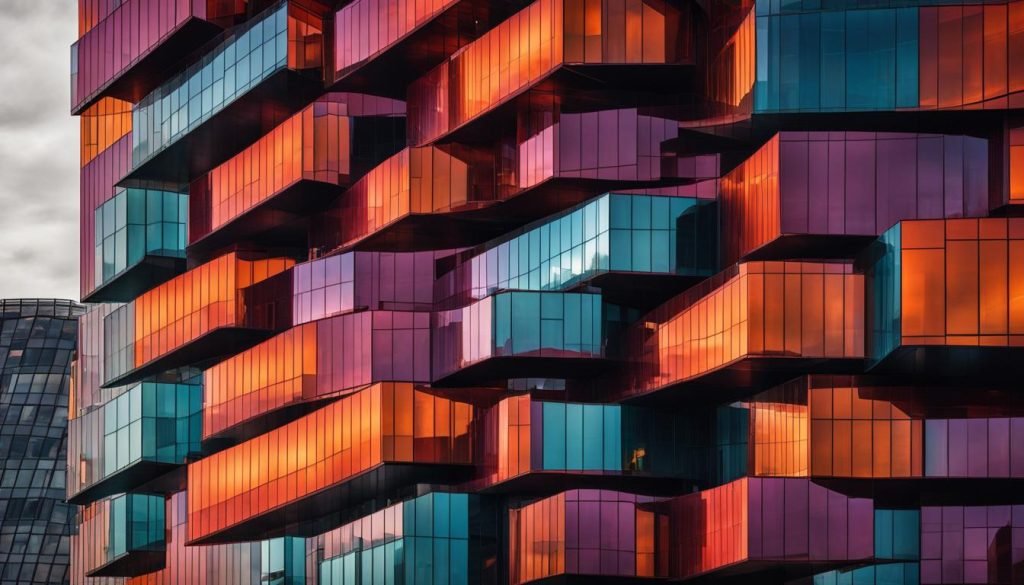
Experimenting with post-processing techniques allows photographers to elevate their images beyond traditional documentation, creating visually stunning and expressive architectural photographs. By embracing innovation and pushing the boundaries of post-processing, photographers have the opportunity to add a new dimension to their work and captivate audiences with their unique visual interpretations.
The Incorporation of the Human Element in Architectural Photography
Architectural photography has evolved beyond the mere documentation of buildings and structures. To truly captivate audiences and create an immersive experience, photographers have started incorporating the human element into their photographs. By including people in architectural images, photographers can convey a sense of scale, liveliness, and human connection. Whether it’s a passerby admiring the architecture or individuals engaging with the space, the presence of people adds depth and relatability to the photographs, allowing viewers to envision themselves in the architectural setting.
When photographing buildings and structures, it’s important to strike a balance between showcasing the architecture itself and capturing the human element. By carefully selecting where and how people are positioned within the frame, photographers can create a narrative and tell a story about the relationship between architecture and human interaction. The inclusion of people also adds a sense of movement and activity, making the photographs more dynamic and engaging.
Furthermore, incorporating the human element in architectural photography aligns with contemporary trends in the field. As the industry moves towards a more holistic and experiential approach, photographers are encouraged to go beyond traditional documentation and embrace a more artistic and expressive style. By featuring people in architectural photographs, photographers can create images that evoke emotions and tell compelling stories, resonating with viewers on a deeper level.
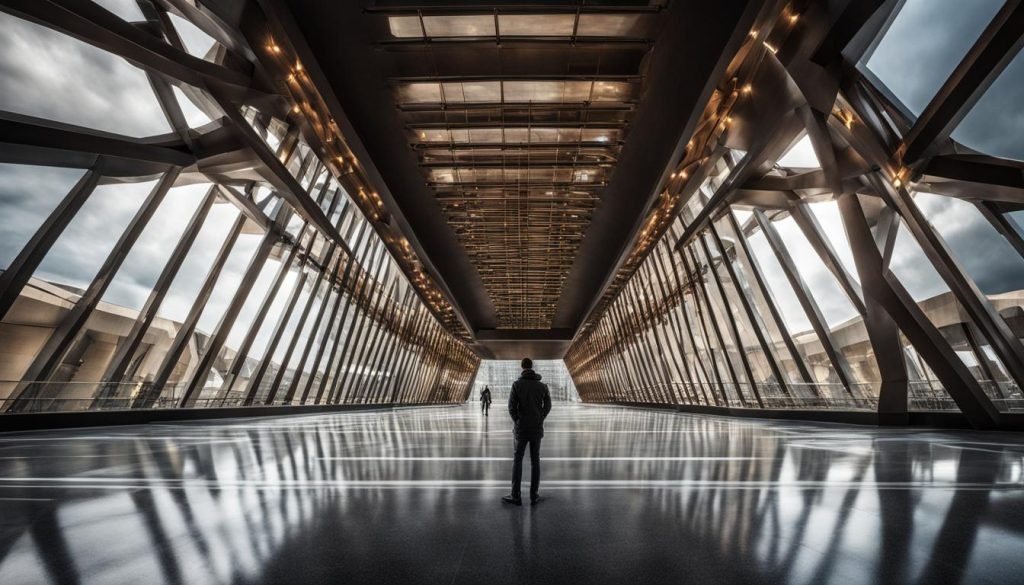
Capturing the Essence of Architectural Spaces
One of the main purposes of incorporating the human element in architectural photography is to capture the essence of architectural spaces. By including people in the frame, photographers can provide a sense of how the space is experienced and used in real life. Whether it’s a crowded city square or a serene library, the presence of people adds context and brings life to the photographs. Additionally, including people can help highlight specific architectural features or emphasize the scale of the buildings. This approach allows photographers to create images that are not only aesthetically pleasing but also meaningful and immersive.
Adding a Sense of Scale and Connection
The inclusion of people in architectural photography adds a sense of scale, allowing viewers to better understand the size and proportions of the buildings. It provides a reference point and helps create a visual understanding of the space. Furthermore, by featuring individuals interacting with the architecture, photographers can establish a sense of connection between the viewers and the spaces being photographed. This connection can evoke emotions and a sense of familiarity, making the architectural photographs more relatable and engaging.
Embracing Futuristic Concepts
In the ever-evolving world of architectural photography, embracing futuristic concepts is a trend that photographers can explore to push their creative boundaries. The architectural landscape is constantly changing, with avant-garde structures and designs challenging traditional norms. To capture the essence of these futuristic concepts, photographers must employ innovative techniques and approaches that highlight the unique features and aesthetics of these cutting-edge buildings.
One approach to capturing futuristic architecture is to experiment with angles and perspectives that showcase the dynamic nature of these structures. By utilizing aerial photography or low-angle shots, photographers can emphasize the grandeur and scale of futuristic buildings, immersing viewers in a visually compelling experience. These unconventional perspectives allow for a fresh and exciting portrayal of architectural spaces, lending a sense of awe and wonder to the photographs.
Furthermore, incorporating advanced technologies into architectural photography can enhance the futuristic feel of the images. By utilizing drones or other high-tech equipment, photographers can capture unique viewpoints and perspectives that wouldn’t be possible with traditional shooting methods. The integration of these technologies adds a layer of innovation to the photography, aligning with the forward-thinking nature of futuristic concepts.
Quote:
“Embracing futuristic concepts in architectural photography allows photographers to push their creativity and capture the imagination of viewers. By experimenting with unconventional angles and incorporating advanced technologies, photographers can create visually compelling images that showcase the unique nature of avant-garde structures.”
In summary, embracing futuristic concepts in architectural photography provides photographers with the opportunity to capture the cutting-edge designs of modern architecture. By experimenting with angles, perspectives, and advanced technologies, photographers can create visually compelling images that transport viewers into a futuristic world. This trend allows photographers to push their creative boundaries and capture the imagination of their audience, making architectural photography a captivating and inspiring art form.
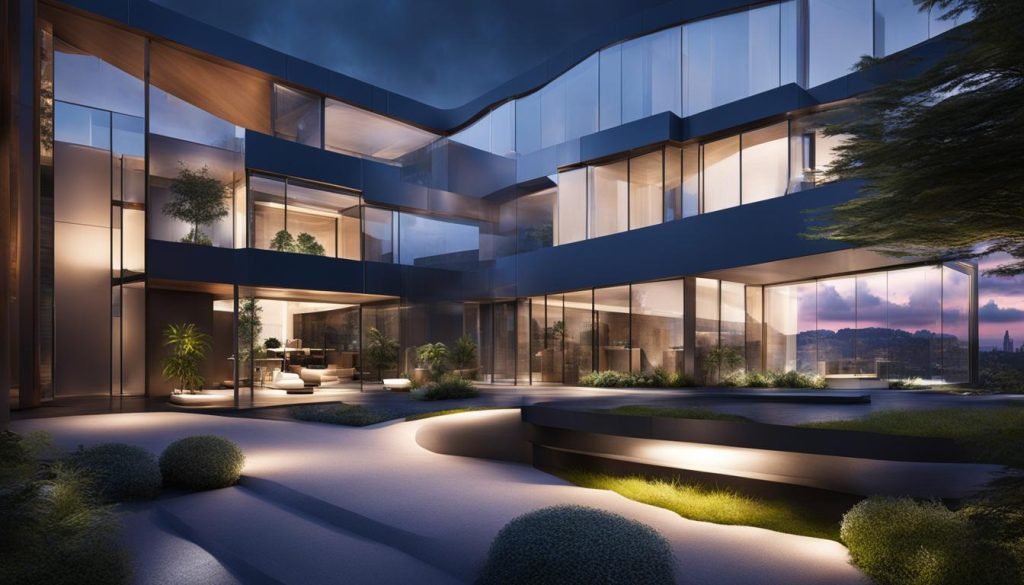
The Impact of Architectural Photography Competitions
Architectural photography competitions have a significant influence on the industry, driving the emergence of new trends and pushing photographers to explore innovative techniques. These competitions provide a platform for photographers to showcase their work, gain recognition, and inspire others in the field. By participating in architectural photography competitions, photographers are exposed to a diverse range of styles and perspectives, fostering an environment of creativity and learning.
Competitions not only encourage photographers to continuously improve their skills, but they also serve as a catalyst for the development of emerging trends. As photographers compete to stand out and win awards, they are driven to experiment with new approaches, compositions, and post-processing techniques. This constant push for innovation leads to the discovery of fresh perspectives and the evolution of architectural photography as a whole.
Through architectural photography competitions, photographers have the opportunity to learn from industry experts and receive valuable feedback on their work. This exchange of knowledge and constructive criticism helps photographers refine their skills and expand their artistic vision. Additionally, the exposure gained from participating in competitions can open doors to new opportunities, such as collaborations with architects, publications, and exhibitions, further fueling the growth and recognition of emerging trends in architectural photography.
Overall, architectural photography competitions are instrumental in shaping the industry by encouraging photographers to push their creative boundaries, discover new trends, and inspire others. As photographers continue to participate and excel in these competitions, the field of architectural photography will continue to evolve, showcasing the ever-changing and innovative nature of capturing buildings and structures.
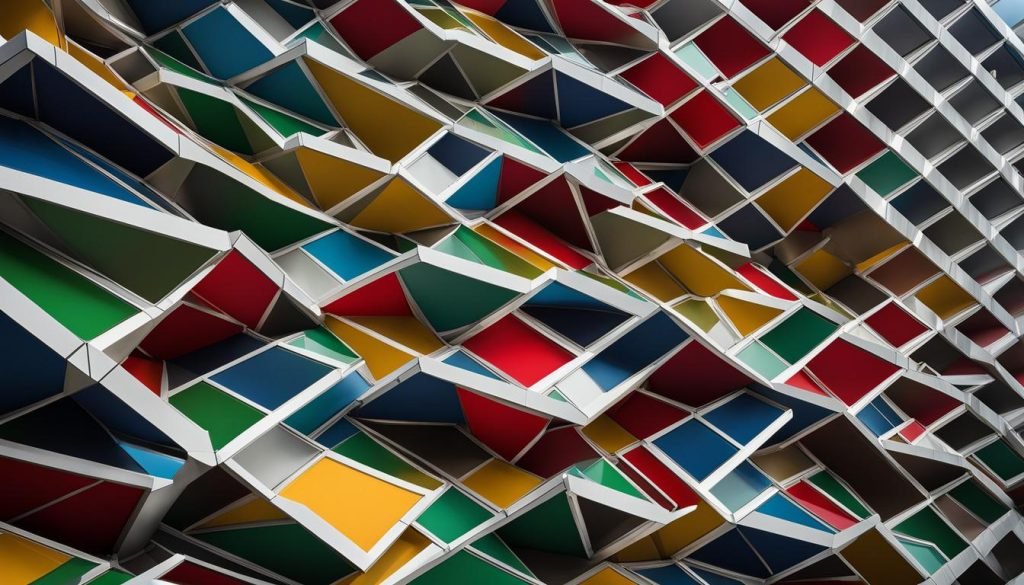
The Future of Architectural Photography
As we look to the future, the world of architectural photography is poised for exciting advancements and new possibilities. With the rapid development of technologies like virtual reality, augmented reality, and artificial intelligence, photographers have the opportunity to explore innovative ways of capturing and presenting architectural spaces. These emerging technologies allow for immersive experiences, allowing viewers to virtually walk through buildings and experience the design in a whole new way.
Additionally, the future of architectural photography holds immense potential for futuristic concepts and ideas. With architectural design pushing boundaries and embracing avant-garde structures, photographers will play a crucial role in documenting and visually communicating these remarkable creations. The use of unconventional materials, sustainable practices, and cutting-edge technologies will continue to shape the architectural landscape, and photographers will be at the forefront of capturing the essence of these future-forward designs.
As the field of architectural photography evolves, it will be crucial for photographers to stay updated with the latest trends and techniques. Embracing innovative perspectives, incorporating sustainable elements, and experimenting with post-processing will allow photographers to create visually engaging and captivating images. By continuously honing their skills and pushing boundaries, photographers can ensure that their work remains relevant and resonates with audiences in this ever-evolving industry.
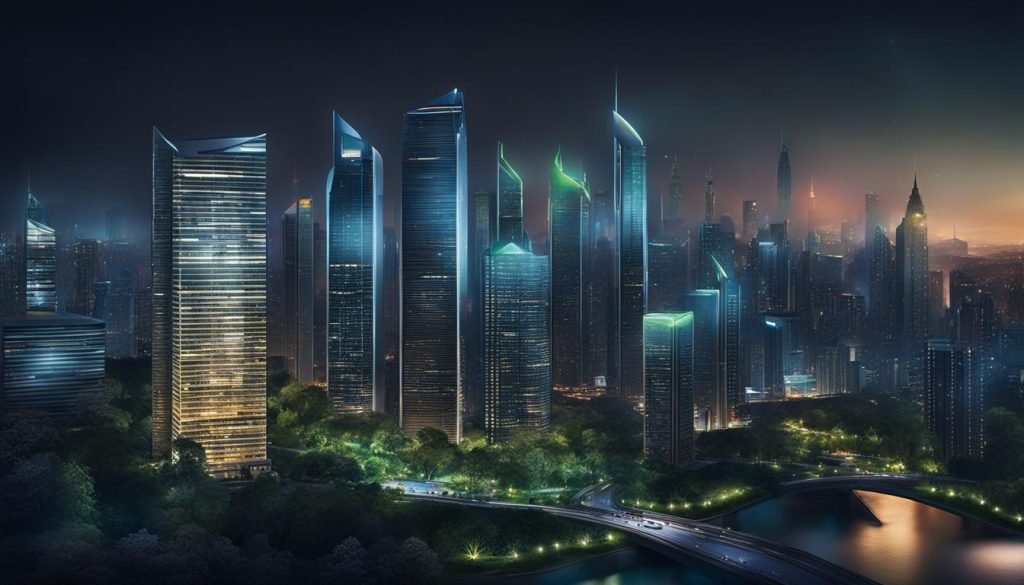
The Importance of Adapting to Change
In order to thrive in the future of architectural photography, photographers must be adaptable and open to change. Keeping up with emerging technologies, trends, and innovative techniques will be essential to staying ahead of the competition. By embracing new tools and approaches, photographers can push their creative boundaries and deliver stunning visuals that capture the imagination of viewers.
By staying curious, continuously learning, and embracing the unknown, photographers can shape the future of architectural photography and create truly remarkable work.
Unleashing Creative Potential
The future of architectural photography holds tremendous potential for photographers to unleash their creative capabilities. With the advent of advanced technology, photographers can experiment with unique perspectives, lighting techniques, and post-processing effects to create visually stunning images that push the boundaries of traditional photography. By tapping into their artistic vision and embracing the opportunities presented by the future, photographers can capture the essence of architectural design in truly extraordinary ways.
Conclusion
In conclusion, staying updated with the latest architectural photography trends is crucial for photographers looking to elevate their craft and captivate audiences. The industry is constantly evolving, with new techniques and perspectives shaping the way buildings and structures are captured. By embracing minimalism, experimenting with new angles and perspectives, incorporating sustainable designs, and pushing the boundaries of post-processing, photographers can ensure that their work remains relevant and engaging.
With the increasing focus on sustainability and the integration of new technologies, the future of architectural photography holds endless creative opportunities. Advancements in virtual reality, augmented reality, and artificial intelligence open up new ways of capturing and presenting architectural spaces. Additionally, photographers play a significant role in documenting and visually communicating the developments in sustainable architecture. The future of architectural photography is exciting, promising new possibilities and pushing the boundaries even further.
By continuously honing their skills and staying updated with the latest trends, photographers can ensure that their work stands out in a dynamic and competitive field. Whether it’s embracing minimalism, capturing sustainable designs, or experimenting with new techniques, staying ahead of the curve allows photographers to captivate audiences and produce visually stunning architectural photographs. So, keep an eye on the latest trends and techniques, and let your creativity soar in the ever-evolving world of architectural photography.
FAQ
What are the latest trends in architectural photography?
The latest trends in architectural photography include the use of unique angles and perspectives, experimenting with lighting techniques, embracing minimalism, highlighting sustainable architecture, and incorporating futuristic concepts.
How does a background in architecture influence architectural photography?
A background in architecture allows photographers to understand the principles of architectural design and space, which translates into visually appealing photographs. It also enables them to capture the essence and atmosphere of a space, going beyond traditional documentation and embracing a more artistic approach.
What are some innovative techniques in architectural photography?
Some innovative techniques in architectural photography include using drones to capture unique viewpoints, experimenting with unconventional angles and perspectives, and incorporating different lighting techniques to create dramatic effects and emphasize architectural details.
Why is lighting important in architectural photography?
Lighting plays a crucial role in architectural photography as it can greatly enhance the mood and atmosphere of a space. Photographers experiment with different lighting techniques to create dramatic effects, capture natural light and shadows, and highlight specific architectural elements.
How does minimalism influence architectural photography?
Minimalism in architectural photography focuses on clean lines, simplicity, and a reduction of visual elements. By emphasizing the essence of a building and removing distractions from the frame, photographers can create visually appealing images that align with contemporary design trends.
What role does sustainable architecture play in architectural photography?
In architectural photography, sustainable architecture is highlighted to raise awareness about environmentally conscious designs. Photographers showcase buildings that prioritize energy efficiency, eco-friendly materials, and green spaces, contributing to the promotion of sustainable building practices.
How does post-processing enhance architectural photography?
Post-processing allows photographers to enhance their images and bring out the desired aesthetic. By experimenting with different styles and effects, photographers can add depth, enhance colors, and create unique visual interpretations of architectural spaces.
Why is incorporating the human element important in architectural photography?
Including people in architectural photographs adds a sense of scale, liveliness, and connection to the viewer. It allows the audience to envision themselves in the architectural setting and creates a more relatable and immersive experience.
How can architectural photographers capture futuristic concepts?
To capture futuristic concepts, photographers need to visualize and document avant-garde structures and spaces that challenge traditional norms. By embracing innovative building materials and cutting-edge technologies, they can present these concepts in a visually compelling way.
What impact do architectural photography competitions have on the industry?
Architectural photography competitions provide a platform for photographers to showcase their work, gain recognition, and inspire others in the field. Participating in these competitions exposes photographers to diverse styles and perspectives, leading to the emergence of new trends and techniques.
What does the future hold for architectural photography?
The future of architectural photography is characterized by experimentation and the integration of new technologies. Advancements in virtual reality, augmented reality, and artificial intelligence offer photographers new ways to capture and present architectural spaces, while sustainability and technological advancements in architecture provide opportunities for documenting and visually communicating these developments.




